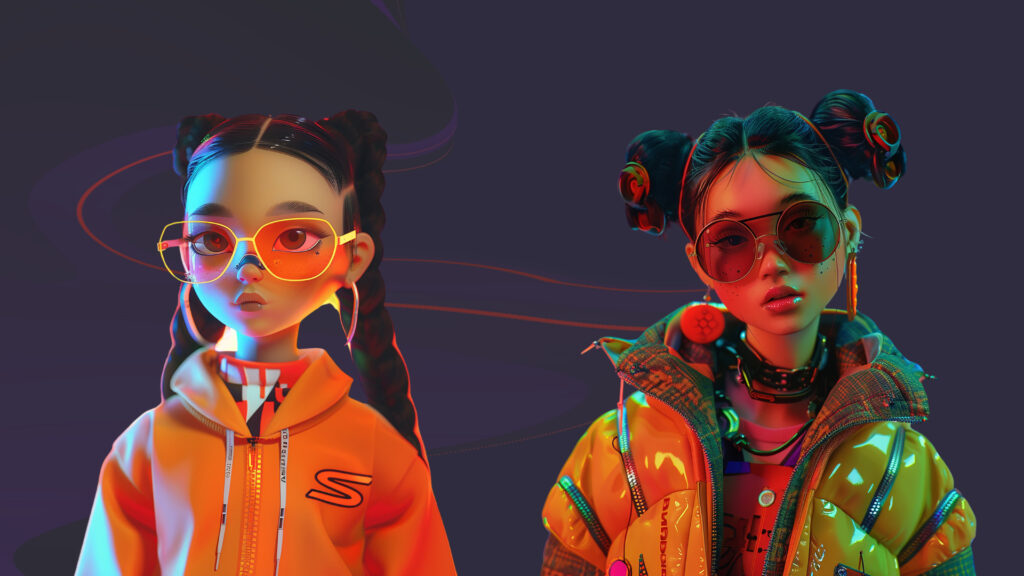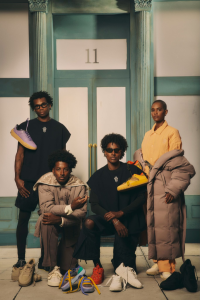In a world where social media marketing seems to be the gold standard for attracting the attention of young people, a quiet but significant shift is taking place. The youngest consumers no longer spend all their leisure time on TikTok or Instagram, but prefer the virtual worlds of video games. Why are familiar strategies losing their relevance, and what do brands risk missing out on by limiting themselves to social media? How are games becoming a new hotspot for fashion and advertising, and what threat does this pose to TikTok? Let’s dive into the trend that is shaping the future triumphs and failures of the industry.
Why is it important for brands to pay attention to Generation Alpha?
Before talking about changes in the behavior of children and teenagers, it’s worth understanding who the representatives of Generation Alpha are. These are those born from 2010 to 2024, that is, today’s schoolchildren and toddlers. According to demographers, this is the most digitally native generation in history, and by 2030, its numbers will exceed 2 billion people (UNICEF data). Families raising Alpha kids are most often made up of millennials — that is, parents already proficient in modern technology who pass on their experience to their children.
The financial aspect is impressive: as UBS writes, up to $83.5 trillion in capital will be transferred to younger generations, including Alpha, over the next 25 years. This figure turns young gamers into a key strategic asset for all global brands, from luxury to mass market. Early exposure to style, fashion, and brands in a digital environment shapes future habits and loyalty. So how can we now lay the foundation for trusting relationships with the buyers of tomorrow?
Video games vs. social media: Where do children spend their time?
The stereotype of teenagers endlessly scrolling TikTok no longer reflects the full picture. UBS analysts, citing statistics from the Newzoo platform, found that fans of video games from Generation Alpha split their time almost equally between games and social media. Interestingly, among adults, the shift in focus still occurs towards games. However, in this case, it is not only about video games but also about the iGaming industry. Data on the popularity of mobile apps like 1win from app1win.com, as well as platforms such as Mostbet and PinUp, indicate steady growth in the number of players. And experts believe this trend will continue over the next few years.
At the same time, teenagers from older generations (Gen Z and millennials) open social networks about 2 hours a week more often than they play games. The conclusion is simple: for Alpha, video games are not just entertainment, but the main platform for socializing with friends.
The reason for this trend lies not only in the appeal of virtual worlds but also in legislative changes. In Australia, in autumn 2023, a ban was introduced for children accessing social networks, strengthening the shift towards gaming as an alternative to familiar social platforms (source: The Guardian). Thus, a unique “gaming ecosystem” is being formed — a digital environment where players not only play but also build relationships, discuss news, and co-create content. How will marketing change if the key to the audience lies outside traditional social media?
How do brands integrate into gaming worlds?
The video game market today is not just about entertainment, but also a real showcase for the fashion industry. Companies are discovering new formats of presence: creating in-game items, holding themed events, launching limited edition digital items. For example, on the Roblox platform, brands can create their own game scenarios where users interact with virtual goods — clothing, accessories, or cosmetics.
But not all platforms are equally open to collaboration. Roblox and Fortnite (developed by Epic Games) are known for their flexible approach: here, users can create their own worlds, and brands can integrate into the gameplay through partnerships. At the same time, many games are built on the principle of a “closed world” — they limit third-party involvement to preserve a unique atmosphere.
Successful formats include:
- In-game tasks and challenges with a rewards system (leaderboard — a table where the best players are displayed)
- Digital currencies, such as Robux in Roblox (which can be purchased for real $)
- Collectible items and limited edition “skins”
UBS analysts note: “Almost 60% of Generation Alpha learn about new brands through activity in games and are more likely to buy what they see.” This communication channel looks far more promising than traditional social media advertising. Will brands be able to unlock the full potential of gaming — or will they face new challenges?
Examples of successful collaborations
The most notable cases in recent years have been interactive campaigns by leading brands in Roblox and Fortnite. For example, Fenty Beauty (Rihanna’s cosmetics brand) held a contest inside Roblox: players created virtual lip glosses, competed for a spot on the leaderboard, and the winning shade became a limited edition novelty for Sephora stores. This approach engages creativity and competition mechanics, turning the participant into a co-author.
Another example is the experience of E.l.f. and Skechers. In 2023, nine-year-old Natalie, a participant in the BoF test panel, became interested in the Skechers brand after completing a quest in Roblox and receiving virtual sneakers. Previously, she had no preferences for this brand, but now she knows not only the name but also the products. Similar mechanics are used by Nike and Adidas, organizing real “fashion duels” in Fortnite: their virtual sneakers become collectibles and a topic of discussion among players (data from The Business of Fashion).
UBS research emphasizes: 60% of Alpha first encounter brands specifically through gaming events or products. Video games are becoming a new runway for fashion, where the brand ambassadors are not celebrities, but the players themselves.
Limitations and challenges for brands in gaming
Despite growing interest, the path to virtual worlds is not a bed of roses. Not all projects turn out to be successful: some brand games or quests quickly lose relevance — this is evidenced by children’s feedback in BoF tests in 2023, when not all game scenarios were found engaging. Platform-specific features also impose limitations: not every “world” is open to external integrations. It’s important to remember that children’s interests change — what was attractive at age 9 may be forgotten by age 15.
UBS experts warn: the long-term effectiveness of gaming in building loyalty has not yet been confirmed; much depends on the creativity and ability of the brand to subtly integrate into game mechanics. Some forecasts are based on estimates, not final data.
Video games vs. social media: who will win the battle for Alpha’s attention?
It is becoming clear: video games have already changed the rules of brand interaction with the youngest audience. However, social media retains its position, and the battle for the generation’s attention is only beginning. Can TikTok and Instagram offer something that will make children leave Roblox or Fortnite? Or will the gaming environment remain the new main runway for fashion in the coming years? The answer to this question will determine the winners in the race for the future consumer.
Sources: UBS analytical report for 2023, Newzoo data, The Business of Fashion publications, BoF expert opinions, The Guardian, UNICEF. Statistics and forecasts are based on estimates and require further verification as the market develops.











